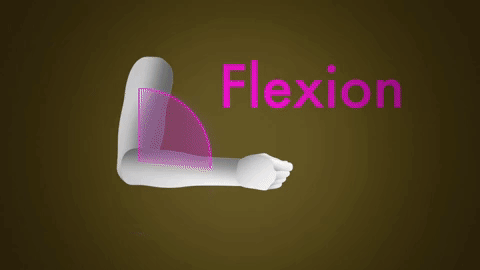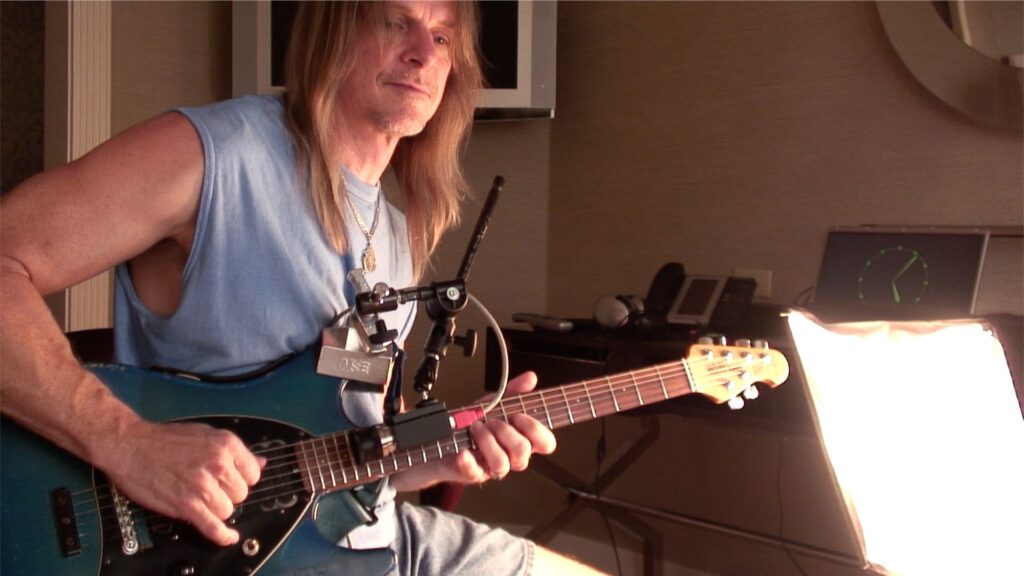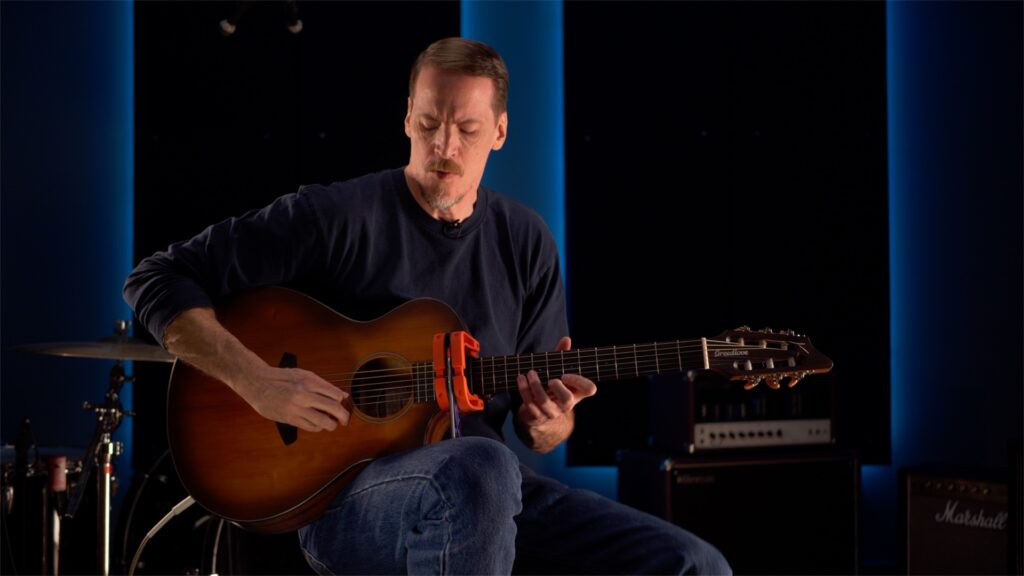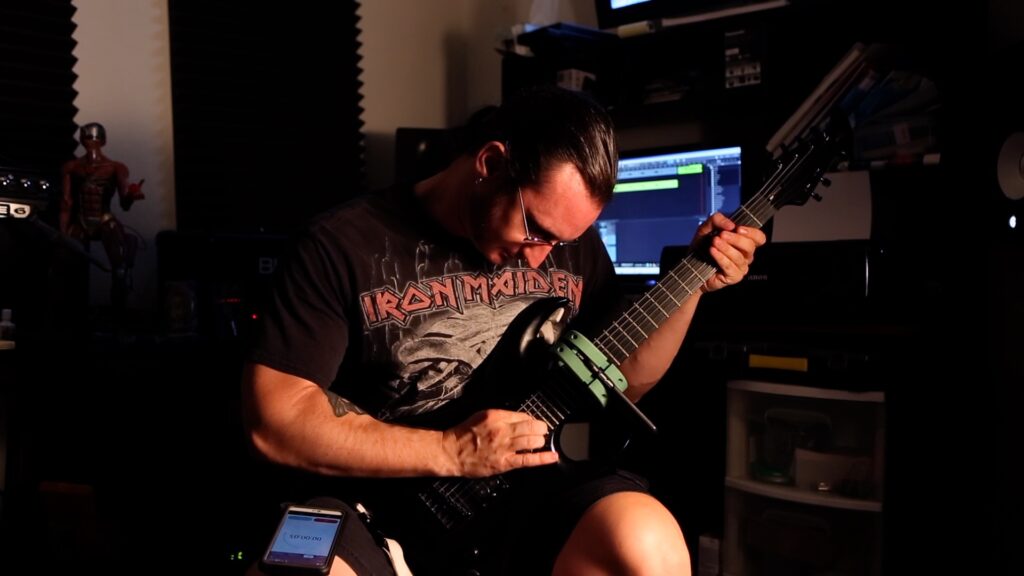Function And Form
The elbow is probably the simplest of all the motion mechanics. It’s just a hinge that moves in two directions, flexion and extension.
It’s powered by the muscles in the upper arm including the biceps for flexion, and the triceps for extension:

Straight Form
Brendon Small’s elbow technique is a textbook example of one of the most common setups for elbow motion, with the forearm resting on the body of the guitar in a pronated orientation, and the wrist and forearm in relatively straight alignment:

Fusion pioneer Steve Morse, while better known for his intricate crosspicked lines, also has a very effective high-speed elbow mode that utilizes a similar pronated form with straight forearm-wrist alignment:

Radial Offset Form
Alternatively, look for the radial offset form used by Bill Hall. This is a slight bend in the wrist toward the thumb — in other words, in the radial direction — which makes the forearm and hand together look something like a hockey stick:

You’ll note this same form in hyperpicking master John Taylor:

Although the straight and radial forms involve slightly a different arrangement of the forearm and wrist joints, these joints are downstream from the elbow. So we don’t believe they change the shape or type of escape motion created by the elbow joint, which still moves back and forth along the same path in both cases.
Upward Pickslanting
Both of these forms require placing the arm against the guitar body while the shoulder remains behind it. This causes the arm to point away from the guitar on a slight angle, creating a shallow upward pickslant. Here’s John Taylor’s UWPS attack:

But introducing a little edge picking can dial out some or all of the pickslant without incurring the garage spikes problem. So observing the pick’s motion path, from upstroke to downstroke, is a much more reliable way of understanding how the elbow joint moves than looking for the “slant” of the pick, which may not be easily visible or even present.